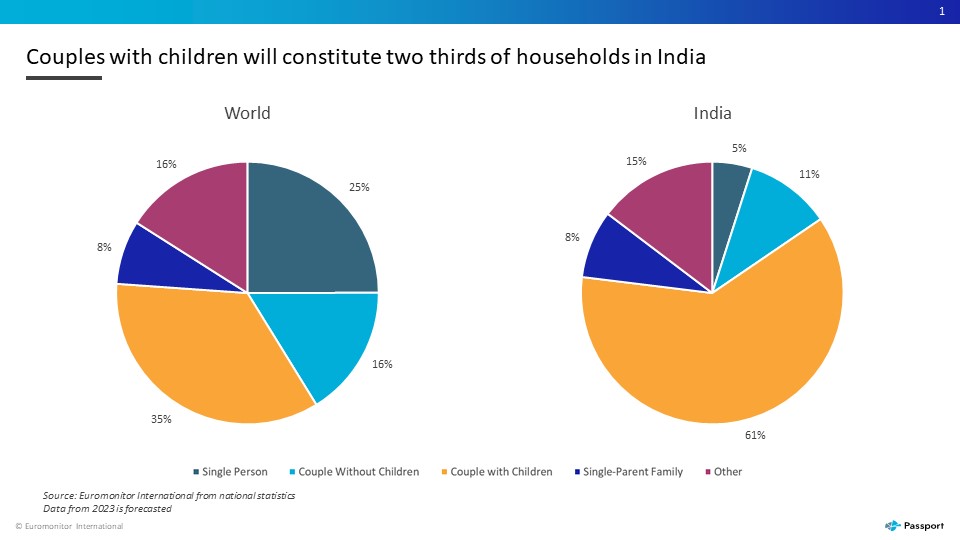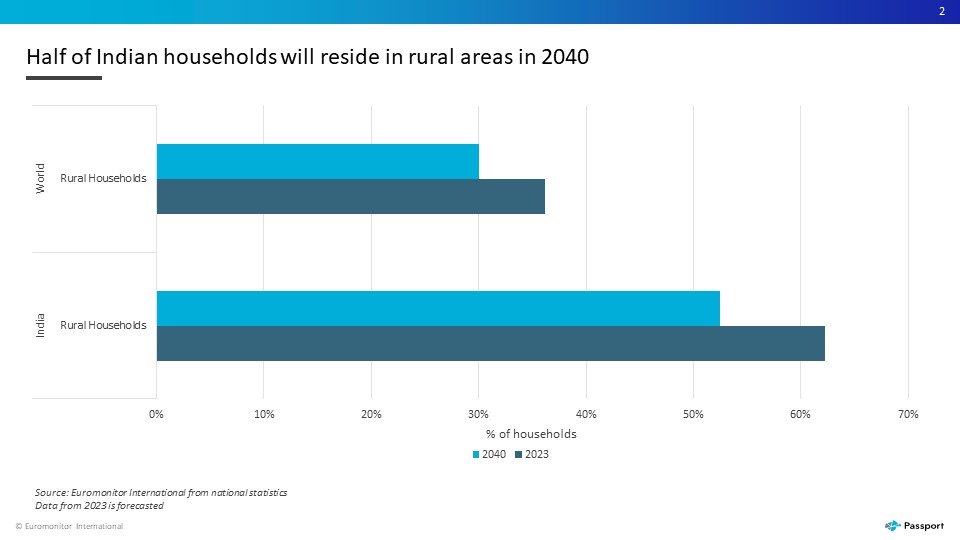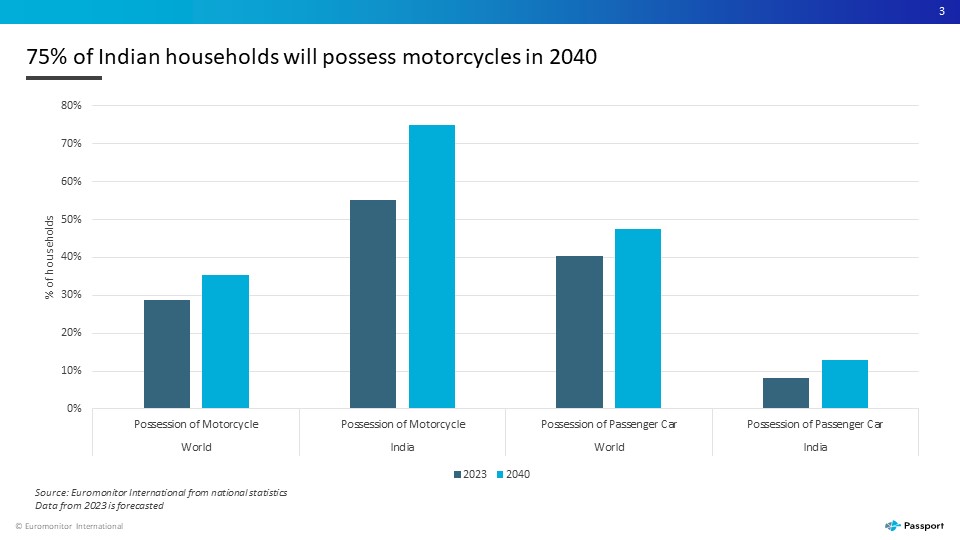Global households are evolving in a fast-paced world with shifting demographics and a changing political, social, economic, and technological environment. In this changing world, India remains one of the biggest consumer markets. Yet, households in India are very different from their global counterparts. This snapshot aims to briefly highlight those differences.
Couples with children will dominate households in India
Globally, couples with children will constitute one third of all households in 2040. By way of contrast, the Indian population will be significantly more child-focused, with two thirds of all households comprising couples with children. Although the strive towards living child-free is evident in India, the traditional family structure, leaning towards a nuclear family with children, will remain prominent. Hence, companies targeting Indian consumers will need to adopt strategies for families with diverse needs and comparatively greater potential for consumer expenditure.
Half of Indian consumers will live in rural areas in 2040
Despite urbanisation and growth of metro and non-metro cities, by 2040, half of all Indian households will be located in rural areas, compared to one third of households being rural-based globally. These consumers often tend to dedicate a greater proportion of their expenditure to essential items, while they try to rationalise their budgets with smaller and value packs. In addition, the geography, availability and accessibility of products play important roles in purchases. Thus, to grow and expand in India, companies must pay close attention to rural consumers by focusing on affordability, value and strong channel distribution.
Motorcycles to remain preferred mode of personal transport in India
Growing disposable incomes and the need for mobility will lead to a fivefold increase in Indian consumers’ expenditure on transportation. However, due to lack of parking spaces, heavy traffic, increasing cost of fuel and the comparatively higher cost of purchasing and maintaining cars, motorcycles are the preferred mode of transport in India. This results in an expected motorcycle possession rate of 75% in India compared to global motorcycle possession of 35% by 2040. Given the potential in the market, companies such as Bajaj Auto, with the aim to grow in the affordable premium segment and mid-sized motorcycles, entered into a partnership with Triumph Motorcycle, the British motorcycle brand. Several companies are also planning to enter or expand in the low-end motorcycle segment or launch EV models of different two-wheeled vehicles.
Read our blog, Top Three Global Households Trends in 2023 for a snapshot that seeks to highlight opportunities that surface from global households trends in 2023.



